
How did society seek entertainment eons before the iPhone, prior to computers being invented and even before the earliest days of motion pictures, when the silent film era was first introduced in the mid-1890s? Communities from around the world gathered together to observe the wondrous array of captivating performances brought to towns by the circus.
Although Circus arts are ancient in origin, the modern circus was born in England in the late 18th century and brought to America shortly after. Setting up shop for weeks on end in small towns across the US, for isolated audiences this sprawling spectacle was a thrilling, educational experience encapsulated by sound, smell, color and togetherness, taking place right outside their doorsteps. The overwhelming success of the earliest circus troupes, dominated by the likes of Barnum and Bailey’s and the Ringling Brothers, were a result of the gilded age of capitalism across America, and gave rise to the later popularity of communal forms of entertainment such as amusement parks, department stores and shopping malls. Throughout the 1800s the circus was an industrial powerhouse, employing thousands and educating millions.
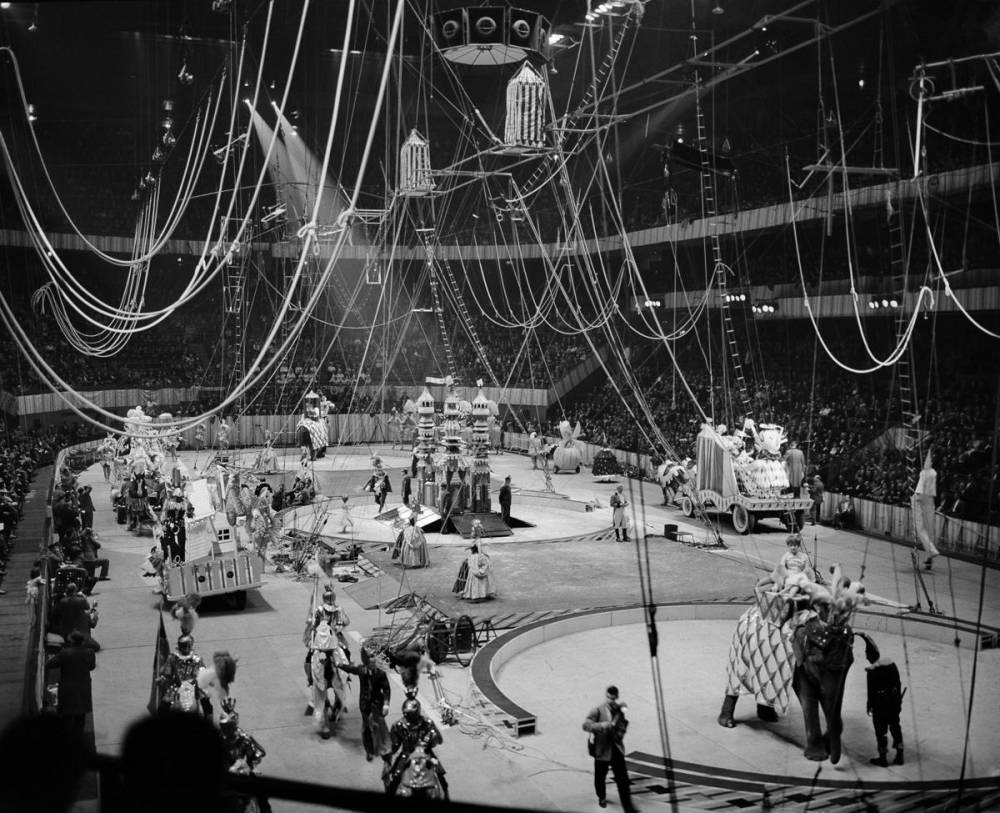
The Circus
Early 1900s
While the earliest European circuses inhabited established urban theater buildings, due to lack of coordinated entertainment infrastructure across America, circus troupes were forced to erect tents and custom staging, producing a multitude of jobs and an overwhelming sense of community. In 1825, Joshua Purdy Brown, a showman from a small town in New York, erected the first canvas “Pavilion Circus” tent, revolutionizing circus architecture and forever cementing the coordinated performance’s identity as a characteristically American form of entertainment. Circus tents began appearing on the outskirts of towns across the US, where entertainment-starved residents flocked to observe these bedazzling spectacles comprised of multicolor clowns, acrobats, tightrope-walkers, equestrians, fire breathers and an array of exotic animals including elephants, camels and zebras.
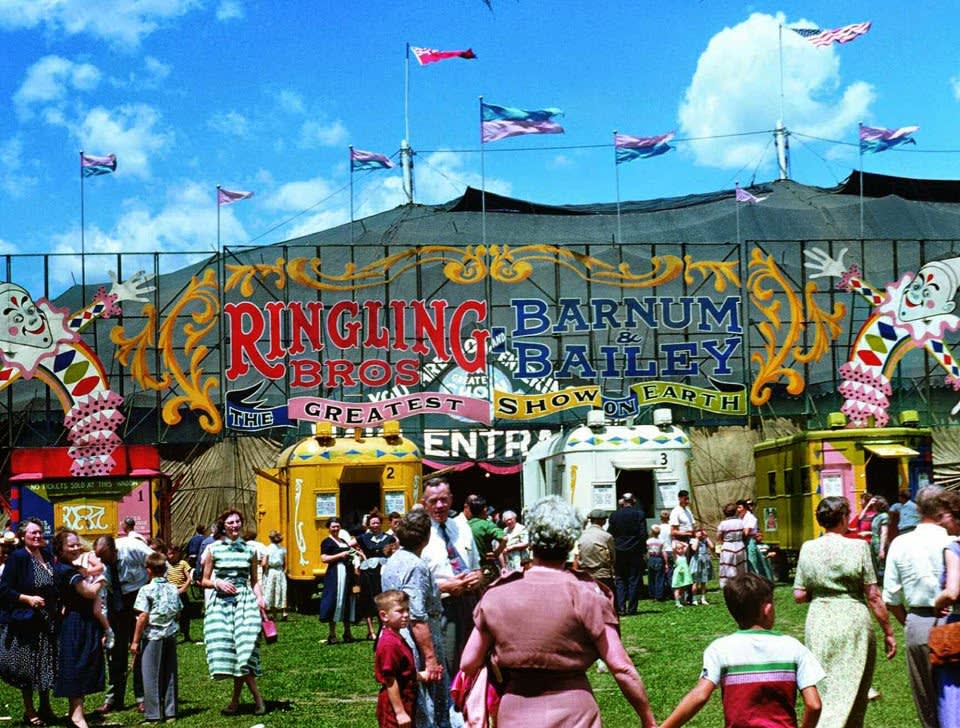
The Ringling Brothers and Barnum & Bailey’s
The Greatest Show on Earth, 1950s
Second to the invention of the circus tent, the railway-building boom across the United States in the mid-1800s was the single most important catalyst in making the circus a truly American form of entertainment. Before the introduction of modernized transport infrastructure, circus troupes would travel by wagon and perform for weeks on end in a single city. The completion of the Transcontinental Railroad in 1869 allowed companies to move seamlessly on newly standardized tracks, proving immensely profitable for American circus impresarios.
By the early 1900s, the circus became the nation’s most popular form of amusement, at which time Barnum and Bailey’s performances grew to accommodate three rings, two stages, and an audience of 10,000 spectators. Throughout the 20th century, the cultural significance of the circus as one of the earliest and most successful forms of spectator-driven entertainment inspired the minds of many.
Elsa Schiaparelli
Circus Collection
Elsa Schiaparelli and Jean Schlumberger
Circus Collection - Ostrich Pendants
Elsa Schiaparelli
Circus Collection - Acrobat Buttons
Elsa Schiaparelli
Circus Collection - Broderie Elephants
Elsa Schiaparelli
Circus Collection - Horse Bolero
Elsa Schiaparelli
Circus Collection - Cast Metal Alloy Buttons
The worldwide popularity of these bedazzling spectacles generated a multitude of vivid imagery and hallmark iconography that lent itself as creative stimulus for the world of Parisian haute couture; the most celebrated of such examples being the 1938 circus-themed collection of Italian-born couturier Elsa Schiaparelli.
Considered wildly radical at the time of inception, Schiaparelli’s circus show was the most striking fashion spectacle Paris had ever seen. The collection’s couture garments featured a multitude of novelty motifs including embroidered prancing horses and performing elephants, heavily embellished boleros featuring swinging trapeze artists, tents, and clowns, and cast metal acrobats rendered as buttons.
Elsa Schiaparelli and Salvador Dali
Circus Collection - Tear Dress and Veil
Elsa Schiaparelli and Salvador Dali
Circus Collection - Skeleton Dress
Elsa Schiaparelli
Circus Collection
Elsa Schiaparelli
Circus Collection - Dress
Schiaparelli
Fall/Winter 2014 Couture
Schiaparelli
Fall/Winter 2014 Couture
Schiaparelli enlisted her loyal roster of frequent collaborators to bring the collection to life. French Illustrator Christian Berard designed vibrant circus-themed textiles, jewelry designer Jean Schlumberger produced ornate ostrich clips, clown brooches and harlequin pins, Jean Clement designed novelty buttons, and Schiaparelli and Salvador Dali produced two of their most celebrated designs throughout their prolific, collaborative careers; the ‘Tear’ dress and veil, for which Dali designed the textile, and the ‘Skelton’ dress, a black evening gown with delicate, protruding bones.
Since the recent reestablishment of Schiaparelli’s eponymous couture house, designers have continued to reference this iconic collection. Creative director Marco Zanini hinted at circus elements throughout his fall/winter 2014 couture show, while for fall/winter 2016, Bertrand Guyon presented an entire array circus-inspired garments; a loving ode to the founder’s most celebrated designs.
The only circus-themed high fashion moment on par with Schiaparelli’s original spectacle came in 1997 by British designer John Galliano. After being hired as creative director of Christian Dior, Galliano showed a vibrant spectacle for his namesake house. Models in bedazzling cirque garb, dresses featuring theatrical horses and jackets with painted tigers, paraded the show’s nontraditional ring-runway encircled by an audience an enamored onlookers; reprising the captivating emotions felt by the earliest of circus-goers.
Paul Cézanne
Arlequin, 1888
Pablo Picasso
Seated Harlequin, 1901
Marc Chagall
Le Cirque - Les Cyclistes, 1962-1967
Walt Kuhn
Clown with a Black Wig, 1930
While the theatricality of 19th and early 20th century entertainment proved inspiration for fashion designers, the art world also took notice. Starting in the late 1800s, when painters began capturing images of modern life on their canvases, the circus and its respective performers became popular subject matter in the work of early modern artists. Artists from Paul Cézanne to Pablo Picasso were seemingly fascinated by the image of the harlequin, a muted character in traditional Italian Circus-like entertainment, typically masked and dressed in a diamond-patterned costume, while painter Marc Chagall produced a prolific body of work centered on the disturbing yet profound nature of Le Cirque, and modernist American painter Walter Kuhn was widely known for his dark, brooding portraits of clowns and other performers.
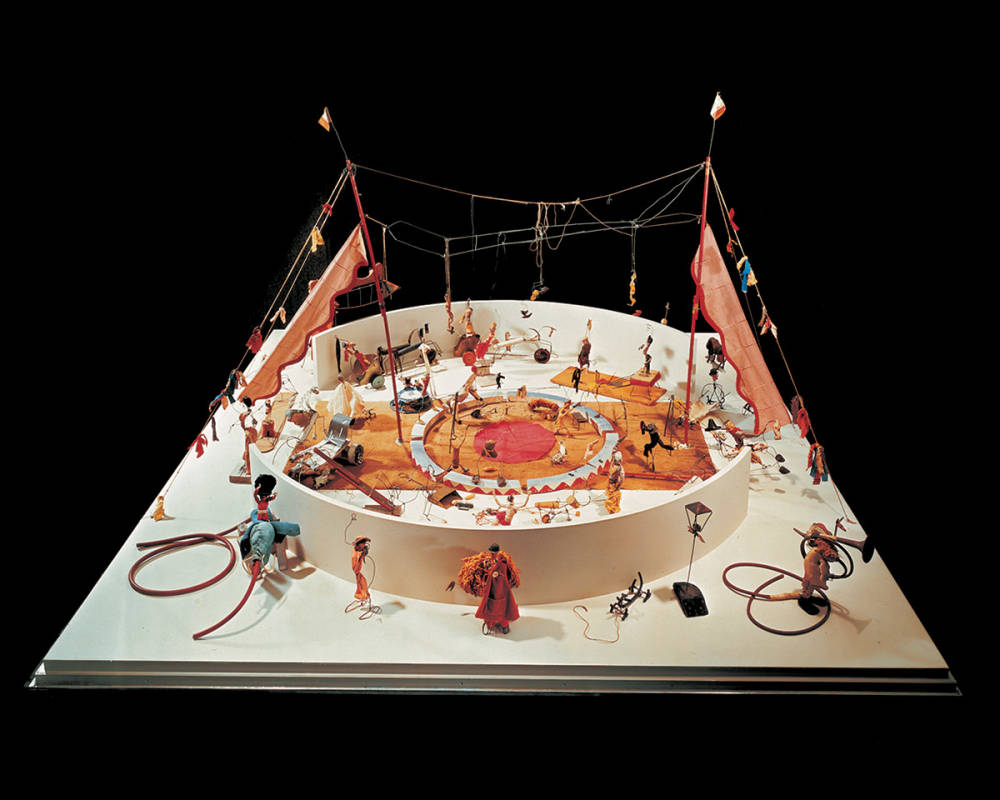
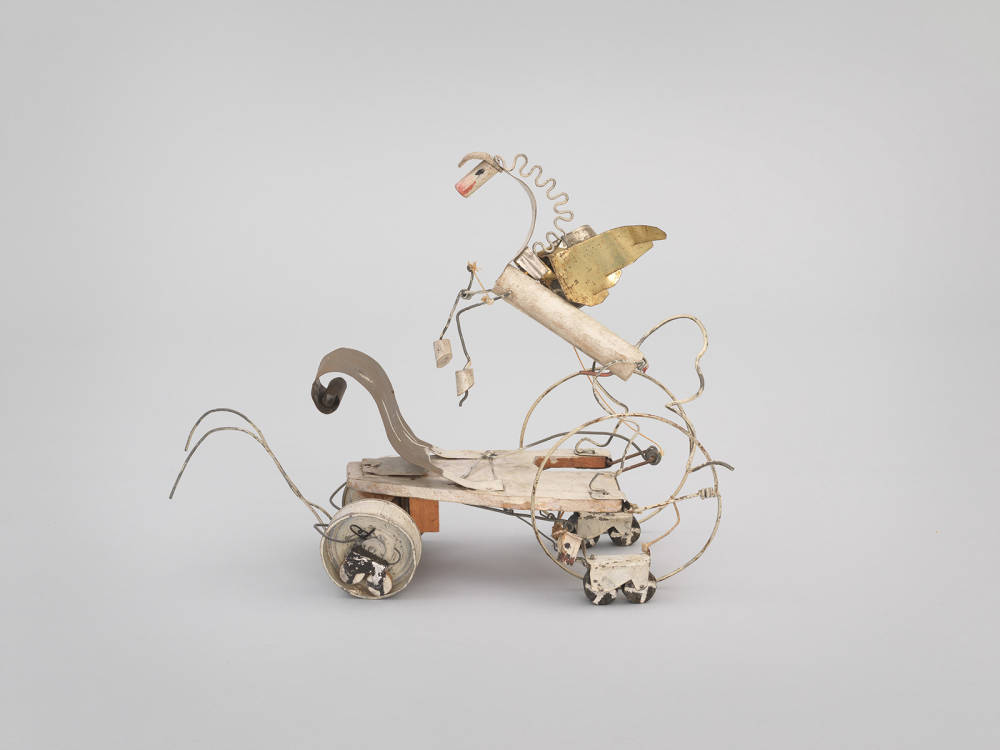
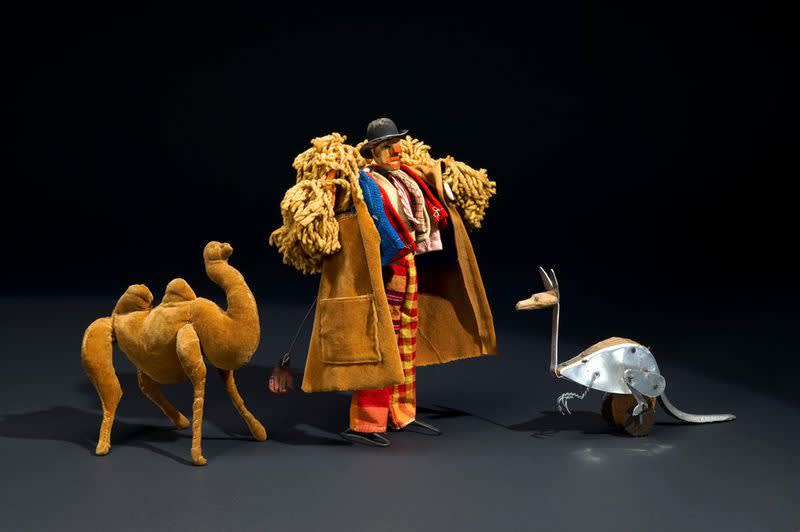
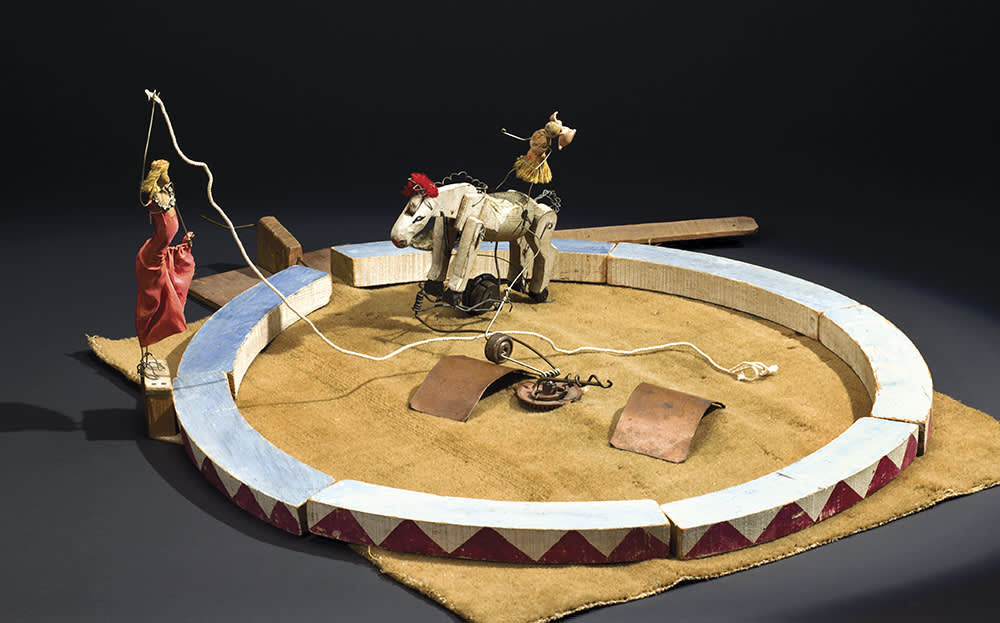
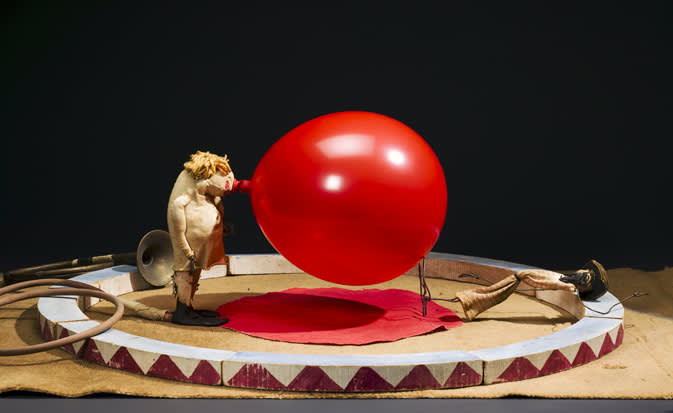
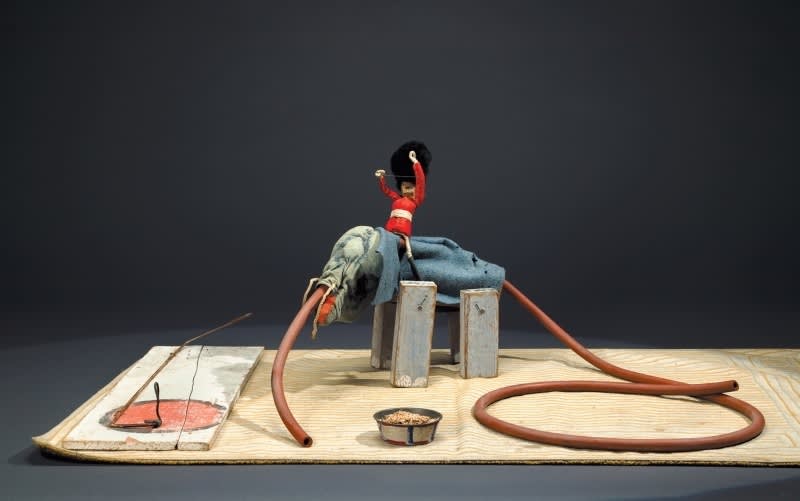
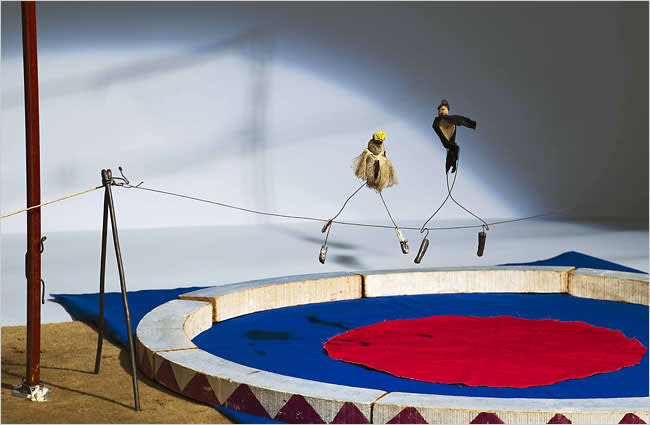
In 1926, sculptor Alexander Calder produced a lighthearted, artistic rendering of the circus and its many attributes. This toy theater piece, entitled ‘Cirque Calder’, merged art and life through avant-garde influences, and is widely recognized as one of the earliest examples of performance art. Calder, an American sculptor and founder of the kinetic art movement, engineered countless elements within the work that generated motion. The circus was to be performed only by the artist himself, serving as the work’s ringmaster, which he did hundreds of times throughout his career. The work, composed of a variety of materials from wire and wood, to cloth and cardboard, was rigged to perform functions of a traditional circus and included characters from equestrians and trainers, to animals, acrobats and a variety of other performers. Calder’s Circus was acquired by the Whitney Museum of Art for its permanent collection in 1983; the acquisition was funded, in part, by The Ringling Brothers and Barnum & Bailey Circus franchises.
As the 20th century evolved, new-age technology began playing an increasingly important role in circus productions and the manners in which these performances were recorded. American photographer Diane Arbus spent her career seeking out marginalized people as subjects for her work. Arbus followed the circus closely and captured countless of its performers in a raw, unprocessed, entirely realistic manner; taking particular likeness to dwarfs, obscure performers and otherwise vulnerable characters.
If Arbus’ black and white photographs captured the dark, broody side of the circus, American industrial designers Ray and Charles Eames did the opposite. The husband and wife duo photographed the circus extensively throughout their careers, often referencing the nomadic society, rich in color and spirit, as a metaphor for their design process. The pair had an immense love for the circus, admiring the show’s spontaneity and the extreme rigor put into each act, so much so that in 1971 they made a film called “Clown Face!” a training film and face-painting tutorial for the students at the Ringling Brother and Barnum and Bailey Clown College in Florida.
Whether you are a performer, architect, artist, photographer, fashion designer, or merely an admirer with childhood memories of your first circus experience, this historic spectacle of captivating performances has enriched countless lives and continues to inspire, centuries after the bedazzling pastime was first introduced in small towns and cities around the world.

Charles + Ray Eames
Circus Photography
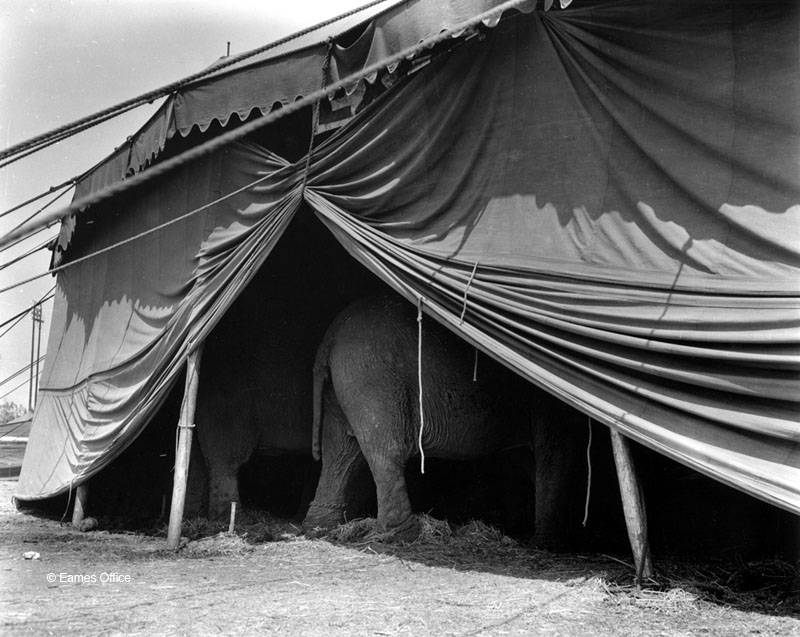
Charles + Ray Eames
Circus Photography

Charles + Ray Eames
Circus Photography
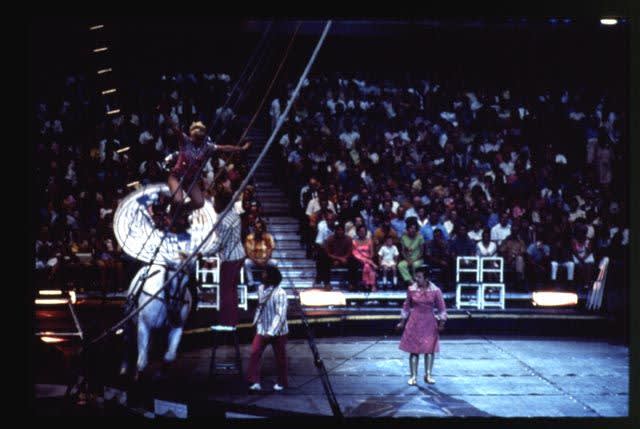
Charles + Ray Eames
Circus Photography
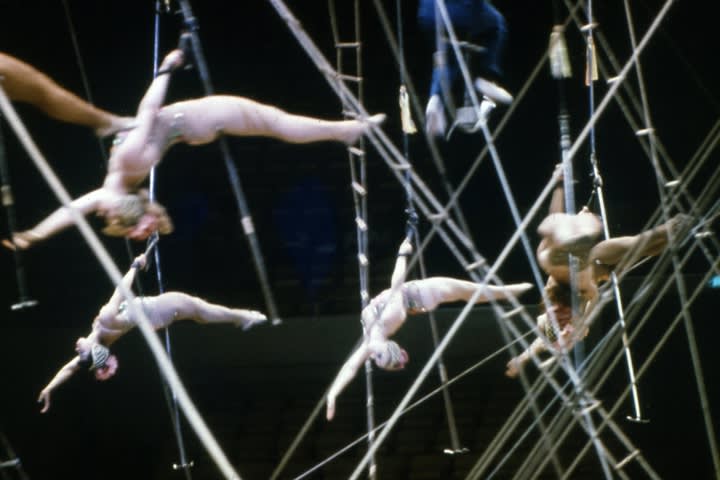
Charles + Ray Eames
Circus Photography
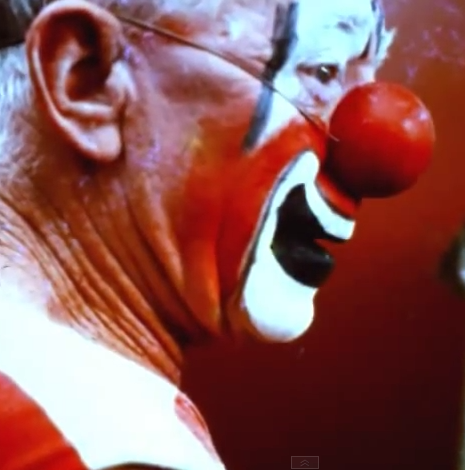
Charles + Ray Eames
Clown Face, 1971
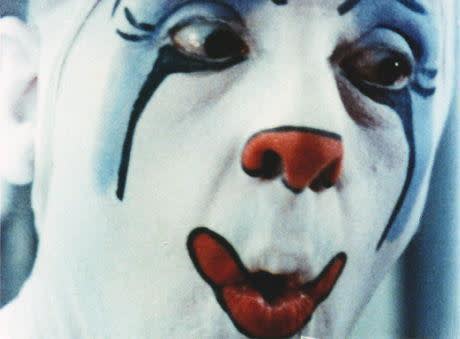
Charles + Ray Eames
Clown Face, 1971
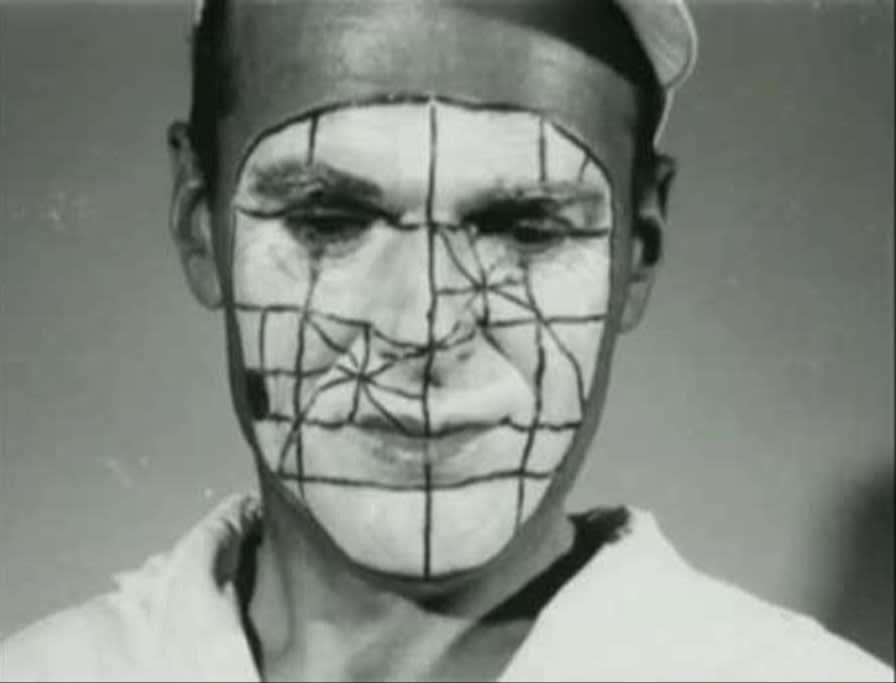
Charles + Ray Eames
Clown Face, 1971



